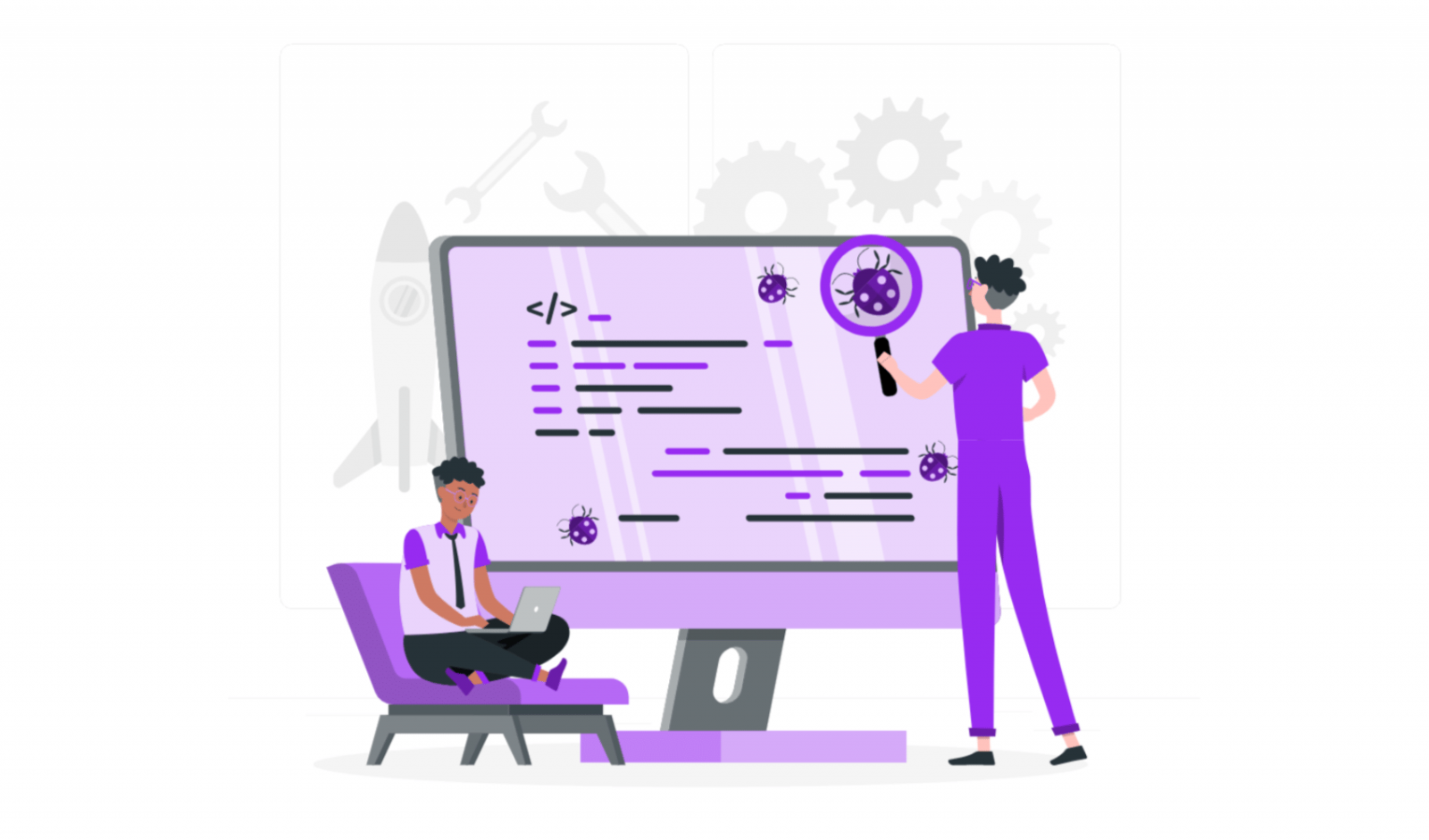Agile project development adheres to the Agile Manifesto and general concepts shared by all agile methodologies. As an Agile team member, an Agile tester has to follow the common principles agreed upon by the team.
The beliefs and principles of your team will guide you when you select practices and make decisions around how you want to work.
We believe the following concepts are vital for an agile tester:
- Continuously offer feedback
- Provide value to the client.
- Facilitate direct connection.
- Have courage.
- Keep it simple.
- Practice constant improvement.
- Adjust to change
- Self-organize.
- Focus on humans.
- Enjoy
1. Continuously offer feedback
Given that agile projects are driven by tests, it should come as no surprise that feedback plays a significant role in agile teams. The traditional role of the tester as a "knowledge supplier" renders her intrinsically valuable to an agile team. One of the most essential contributions of the agile tester is assisting the product owner or client in articulating requirements for each story in the form of examples and tests. The tester then collaborates with coworkers to develop executable tests based on these criteria. Testers, programmers, and other team members collaborate to execute these tests frequently and early in order to be continuously directed by useful feedback.
In this article, we will devote a great deal of effort to explaining how to do this. When the team faces difficulties, feedback can be used to assist in their elimination. Were we unable to deliver a user interface that met client expectations? Let's create a task card to remind us to collaborate with the customer on the next UI story's paper prototypes.
Is management concerned with how the job is proceeding? Display a large visible chart of daily tests prepared, executed, and passed. Display large-scale coverage of functionality, such as test matrices. Have difficulties stabilized the build? Lisa's team posted the number of days before it was time to release the build in order to keep everyone focused on completing stories on time. After it became a habit, they no longer need the visual signal.
2. Value-Provide to the Customer
Agile development includes delivering value in tiny releases that contain the exact capability that the client has recently prioritized. Typically, this involves limiting the scope. It is simple to become distracted by the client team's demand for cool features. Anyone can dispute these modifications, but testers frequently recognize their impact on the narrative because they must consider the testing ramifications.
Agile testers maintain a broad perspective. We can give the most important functionality in this iteration and add to it in subsequent iterations. If we allow additional features to slip in, we risk not meeting our deadlines. If we become overly preoccupied with edge cases and overlook fundamental functionality on the happy path, we will fail to meet the needs of the company.
Agile testers employ the same methodology. While one of our strengths is identifying test cases beyond the "happy path," we must first ensure that the happy path is functional. Later, we can add negative and border tests and automate tests for the happy path. Consider what adds the most value to the consumer at all times and be aware of your context. Adding negative tests to a safety-critical application is a fundamental must. During the estimating phase, testing time must be considered to ensure that adequate time is allocated for the iteration to produce a "safe" feature.
3. Facilitate Direct Communication
No team can function effectively without effective communication. Today, when so many teams are geographically dispersed, communication is more important and more difficult than ever. The agile tester must seek out novel means of facilitating communication. It is a crucial part of her job performance.
Whenever a tester has a query about how a feature should function or what an interface should look like, he or she can consult with a programmer and a business expert. Testers should never impede direct customer-developer connection, but they can often aid in ensuring such dialogue occurs. Agile testers examine each story or theme from the customer's perspective, but they also comprehend the technical restrictions and constraints associated with executing features. Customers and developers can achieve a common language with their assistance. Business professionals and software engineers frequently speak distinct languages.
They must discover common ground in order to collaborate effectively. Testers can assist in the creation of a shared language, project dialect, or team jargon.
Face-to-face communication is unparalleled. Agile development depends on ongoing cooperation. As with other agile team members, testing team members will seek out customer and technical team members for discussion and collaboration. When an agile tester suspects a concealed assumption or misinterpreted requirement, she will discuss it with the customer and the developer. If people in a different building or on a different continent need to communicate, they seek inventive alternatives to face-to-face, real-time talks.

4. Have Courage
XP's primary value is bravery, and approaches such as test automation and continuous integration enable teams to demonstrate this attitude. The developers have the confidence to make changes and reorganize the code since an automated regression suite provides a safety net. In this section, we discuss the emotional fortitude required to adapt to an agile team.
Have you ever worked for an organization where testers were unable to communicate with business stakeholders or other technical team members? While you may jump at the opportunity to join a collaborative agile workplace, you may feel uneasy about having to go ask the client for examples, ask a programmer to help automate a test, or bring up a blockage during the daily stand-up.
When you first join an agile team, or when your current team initially switches to agile development, it is normal to feel fear and have a list of questions that require answers. How are we going to accomplish testing activities for each tale in such a short amount of time? How will testing "keep pace" with the development process? How do you determine how much testing is sufficient? Or if you are a functional testing manager or a quality process manager, and it is unclear to you where that role belongs on an agile team, and no one can provide you with an explanation. Agile testers require bravery to find the answers to these issues, but there are other reasons to be courageous.
We must have the confidence to fail, knowing that at least we will fail quickly and be able to learn from it. After we've lost an iteration due to an unstable build, we'll consider measures to prevent this from happening again. It requires guts to permit people to make errors, as this is the only way to learn from them.
5. Keep things basic
Agile testers and their teams are required to not only provide the simplest software implementation feasible but also to take a straightforward approach to ensure that the program meets client requirements. This does not imply that the team should not devote some time to analyzing topics and narratives and considering the most suitable architecture and design. It does mean that the team may need to communicate with the business side of the team when their requirements are overly complex and a simpler solution would provide the same value.
Some of us worked in software companies where, as testers and quality assurance personnel, we were required to establish quality standards. We believe this is backward, as it is up to the customer team to determine the quality level they are willing to pay for. Customers should be informed by testers and other team members on all areas of quality, including nonfunctional needs like performance and security. The final decision rests with the buyer. By taking a straightforward, step-by-step approach to its work, the team can aid the client in making sound choices. Agile testing is conducting the simplest feasible tests to confirm that a piece of functionality exists or that the customer's quality requirement (e.g. performance) has been fulfilled.
Simple does not equate to easy. For testers, this entails testing "just enough" with the most lightweight tools and approaches available. Tools can be as straightforward as a spreadsheet or a list. Regression tests must be automated, but we should push them down to the lowest level possible to encourage rapid response. Even straightforward smoke tests may suffice for business-facing test automation.
Exploratory testing can be used to learn about your application and uncover difficult-to-find defects, but you should begin with the fundamentals, time-box side trips, and evaluate how far you should go with edge situations. The ability to maintain a focus on risk, return on investment, and regions of greatest discomfort are facilitated by simplicity.
Final thoughts
If you are looking for a trusted IT partner, VNEXT Global is the ideal choice. With 14+ years of experience, we surely can help you to optimize your business digitalization within a small budget and short time. Currently, we have 400+ IT consultants and developers in Mobile App, Web App, System Development, Blockchain Development and Testing Services. We have provided solutions to 600+ projects in several industries for clients worldwide. We are willing to become a companion on your way to success. Please tell us when is convenient for you to have an online meeting to discuss this further. Have a nice day!













